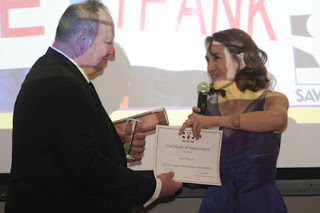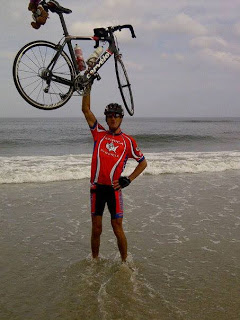Celebrating Heroes Among Us

Save One Life celebrated its third annual spring Gala at an elegant, waterfront venue, The Exchange, located at Boston’s historic Fish Pier. Enjoying the balcony overlooking the ocean, or the expansive interior, about 120 guests from across the country dined on hors d’oeuvres and mingled. Guests represented the hemophilia community in full range, from pharmaceutical companies, to specialty pharmacies, from patients to families.

I opened the evening at 7 pm welcoming our guests. I like to use very current events to weave into my talks, and found a metaphor to use in my opening: while getting ready for the gala, I dropped something on the floor. When I bent down, I happened to look under my bedroom bureau and amidst the dust bunnies, I found a shoe that had been missing for some time. It made me think that sometimes we have to go into the dark places, the not-so-glamorous places, even the dirty places where we’d rather not go to find the things we are missing or have lost. In our affluent society (and most of us are affluent compared to those we serve), we slowly and subtly can lose our compassion, tolerance, mission, and unconditional giving.
A slide show of the many faces of children and young adults from developing countries helped by Save One Life played in the background during the three hour gala, showing some of those unglamorous places–megaslums, rural villages, hamlets, townships. It also showed the faces of suffering.

We thanked our sponsors of the event, donors, and presented Donor of the Year award to Rich Gaton and his company, BDI Pharma, who sponsor 17 children. Special recognition was given to Patrick Schmidt, CEO of FFF Enterprises (88 children), Wolfgang Marguerre, chairman of Octapharma (70 children), and Neil Herson, president of ASD Healthcare (50 children). Only Neil was present from Texas that night.
We had special guests present: Usha Parthasarathy and her husband from India. Usha is our volunteer liaison, and we simply would not have an Indian program without her. We have over 500 beneficiaries just in India and Usha maintains updates on them all! She received a surprise award for her dedication. And she accepted Program Partner of the Year award on behalf of the Kunnamkulam Chapter in India.

A special award was also given to Barry Haarde, a 47-year-old Texan with hemophilia and HIV who had just concluded his second Ride Across America that afternoon, at 3 pm in Salisbury, Massachusetts! Such dedication! Barry averaged over 100 miles a day to raise $35,000 for Save One Life. Barry also dedicated each day of his ride to someone who passed away from hemophilia and HIV, and posted their photos on Facebook. Remarkable thoughtfulness!
Our Inspiration Award went to board member Chris Bombardier, a 27-year-old who has summit both Kilimanjaro and Aconcagua, highest peaks on their continents, becoming the first American with hemophilia on Kili, and the first person with hemophilia ever to summit Aconcagua. We were blessed to have both men in our midst Thursday night.

Thanks to everyone who attended this wonderful event! We raised money to help support our great team. Without them, we could not operate or progress; with them, we have progressed so far!
We have more children waiting for sponsorship. Please visit www.saveonelife.net to learn more! (More gala pics to come!)
Interesting Book I am Reading
All That You Can’t Leave Behind: A Rookie Missionary’s Life in Africa by Ryan Murphy
This might be a good first book for someone
 contemplating becoming a missionary in Africa. It’s an interesting first look at the culture shock one can experience. It’s also interesting what drove Ryan and his wife and new baby to ell everything they owned, beg for survival funds, and leave to a difficult place to teach the schoolchildren of other missionaries. For the experienced, this book is much too fluffy, superficial and lacking in depth, history. It’s told in a rambling, blog-style or journal-style, which might appeal to the younger generation. Not bad, but not meaty or deep; it’s a quick read, too. Two/five stars.
contemplating becoming a missionary in Africa. It’s an interesting first look at the culture shock one can experience. It’s also interesting what drove Ryan and his wife and new baby to ell everything they owned, beg for survival funds, and leave to a difficult place to teach the schoolchildren of other missionaries. For the experienced, this book is much too fluffy, superficial and lacking in depth, history. It’s told in a rambling, blog-style or journal-style, which might appeal to the younger generation. Not bad, but not meaty or deep; it’s a quick read, too. Two/five stars.








